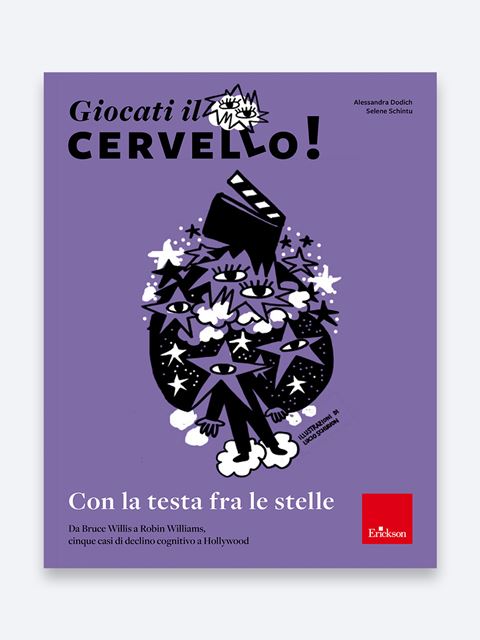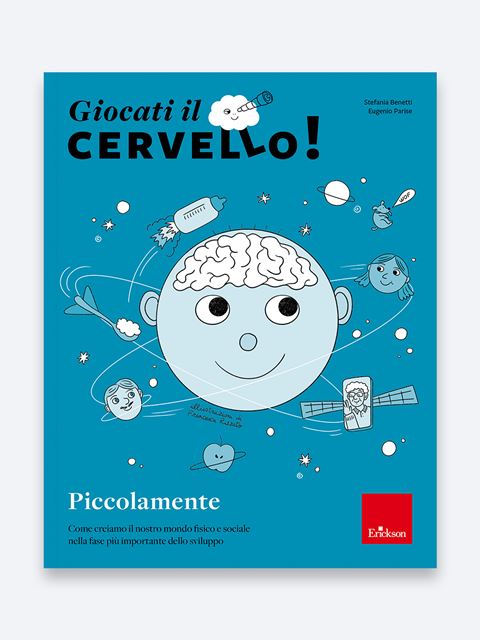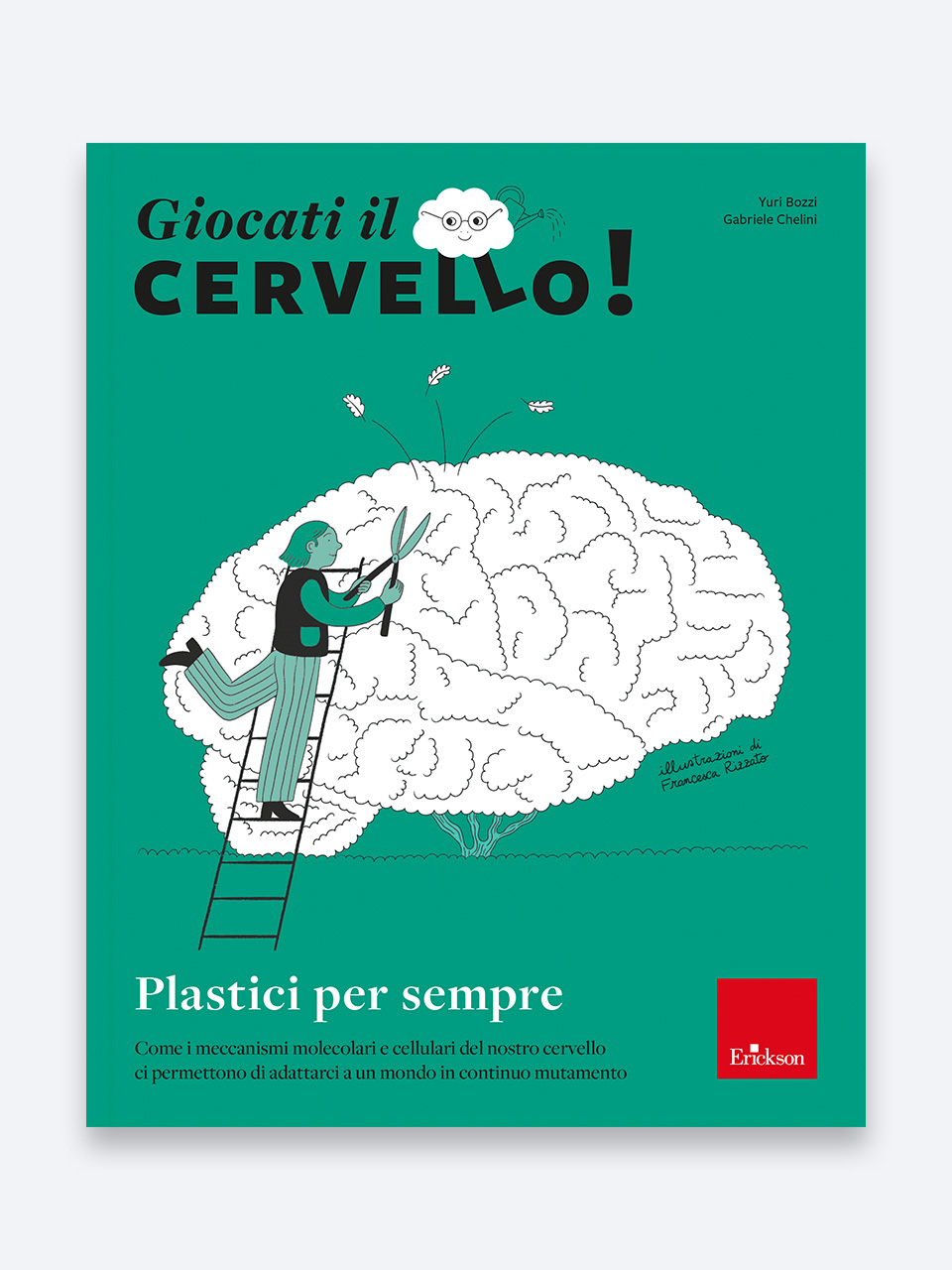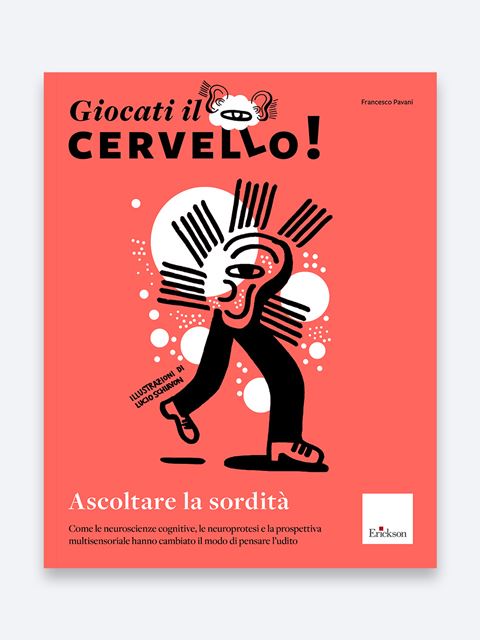 EN
EN
 PT
PT
How we create our physical and social world in the most important stage of development
Product: Book
Trim size in cm: 19x24cm
Pages: 88
ISBN: 9788859037040
Publication date: 01/11/2024
Suitable for: Pre-nursery (ages 0-3)
REQUEST A SAMPLE OR MORE INFORMATION
The book Play With Your Brain! Little Minds takes us on a journey into the minds of newborns, explaining how, even at a very young age, they are already capable of taking their first steps in both the physical and social world. The book is written in a simple and accessible language for everyone and presents analyses, debates, tests, anecdotes and stories, followed by fun activities that challenge the readers. Will it be easy for you to put yourself in a child’s shoes?
Play With Your Brain!
From the collaboration between Edizioni Erickson and the researchers of CIMEC, the Interdepartmental Center for Mind and Brain of the University of Trento, the series Play with your brain! was born, which takes up the challenge of making neuroscience simple, engaging and accessible to everyone. In recent years, neuroscience is a topic that has gained widespread and heterogeneous interest, which has gone beyond the confines of university classrooms and specialist conferences to reach a curious, passionate and transversal public, fueling dissemination in publishing as well as in the media.
1. Object permanence
• Children, or little adults?
• Mom, are you there even when I can’t see you?
• A matter of (violated) expectations
• A JUMP INTO THE LABORATORY: Piaget’s tricks
• CHALLENGE YOURSELF
2. But wasn’t that my pacifier?
• Learning to distinguish things
• Discovering the physical world
• Scientists in diapers
• Grasping shapes and colours
• A mental notebook
• Little brains in actions
• DEBATE: The four stages of child development
• CHALLENGE YOURSELF
3. They all say «Woof»!
• Learning to gather things
• The curious case of the dog (but not the cat)
• It’s the snout that makes the difference!
• How children discover the rules of the world
• Cats, dogs, and… electric brains!
• From perceptual categories to complex concepts
• Language beyond similarities
• A JUMP INTO THE LABORATORY: Violating expectations and preferring novelty
• CHALLENGE YOURSELF
4. Go, ball, jump!
• Towards the social world
• But it was a racket!
• Biological movement
• Seeing the goal
• SPECIES SKIP: social chicks
• CHALLENGE YOURSELF
5. Hey, you! I’m communication with you
• Actions and intentions
• First steps in language
• Gazes that teach…
• … and gazes that ignite
• A special connection
• Baby-sized signals
• The dance of communication
• A multisensory puzzle
• Discovering meaning
• Born to communicate
• DEBATE: Lev Vygotskij and cooperative learning
• CHALLENGE YOURSELF
6. I know that you don’t know!
• Children and bonobos
• Believing the false, understanding the truth
• Search where you least expect it
• Every expectation has its consequence
• DEBATE: ToM yes, ToM no
• CHALLENGE YOURSELF
Solutions
Bibliographic references


Play with your brain!, the editorial series that takes up the challenge of making neuroscience simple, engaging and within everyone's reach, a topic that has gained particularly broad and heterogeneous diffusion and interest in recent years.
Every day we experience how the mind works: our behaviors, emotions, language, and interactions with other people are all actions influenced by how our brain works. Despite its complexity and apparent hostility, the topic has finally left university classrooms and specialist conferences, reaching a curious, passionate and transversal audience, including publishers and various media.
Born in collaboration with researchers from CIMeC, the Interdepartmental Mind and Brain Center of the University of Trento, the new Erickson series Play your brain! talks about neuroscience in an easy way, for those who are not experts or are not familiar with the more specialized vocabulary.
THE VOLUMES IN THE SERIES

Play Your Brain! Head in the stars
ALESSANDRA DODICH, SELENE SCHINTU
Did you know that Robin Williams' Lewy body disease was long mistaken for depression? That after his stroke, Federico Fellini would draw objects incompletely, ignoring their left side? And that the frontotemporal dementia affecting Bruce Willis can lead to an inability to recognise emotions in other people's faces?
The book Play with Your Brain! Head in the stars takes us on a journey into the minds of Hollywood stars: how were their lives turned upside down by brain injuries or neurodegenerative diseases? The book combines simple, accessible language with analyses, discussions, tests, anecdotes, and stories, followed by fun activities that will challenge readers.
Leaf through some selected pages from the book that have been translated into English to facilitate your evaluation:

Play with your brain! Little Minds
STEFANIA BENETTI, EUGENIO PARISE
Did you know that by just three months, newborns are already able to distinguish and categorise objects? That just 30 minutes after birth, they can recognise a face? And that long before learning to speak, they develop countless ways to communicate?
The book Play with Your Brain! Little Brains takes us on a journey into the minds of newborns, explaining how, even at such a young age, they begin to take their first steps in both the physical and social worlds. The book combines simple, accessible language with analyses, discussions, tests, anecdotes, and stories, followed by fun activities that will challenge readers. Will it be easy to step into the shoes of babies? You’ll have to find out!Leaf through some selected pages from the book that have been translated into English to facilitate your evaluation:

Play with your brain! Forever plastic
YURI BOZZI, GABRIELE CHELINI
Play with your brain! Forever plastic tells the infinite adventure of the mind in all its forms, revealing the secrets of what happens to the brain in the different phases of life.
How does memory work? To what extent can a brain regenerate itself? Through a series of analyses, debates, experiments and anecdotes, but also games and activities, this book (which is also a workbook) explains how some cognitive functions actually work, providing advice on how to improve them and always keep them in shape.Leaf through some selected pages from the book that have been translated into English to facilitate your evaluation:

Play with your brain! Listening to Deafness
FRANCESCO PAVANI
Did you know that we hear with our ears but listen with our brains? And that white cats with blue eyes are deaf from birth? That there are languages without sound and that the ear cells that enable us to hear are exactly our age and do not regenerate?
Through analysis, debates, experiments and anecdotes – but also games and activities – we learn about the infinite adventure of listening in all its forms, because deafness is described here by going beyond the mere description of how the ear works. This volume of the Play With Your Brain! series takes us into the world of neuroprosthetics and the multisensory perspective to help us discover how they have changed the way we think about hearing.
Leaf through some selected pages from the book that have been translated into English to facilitate your evaluation:
THE AUTHORS
Alessandra Dodich is an Associate Professor of Neuropsychology and Cognitive Neuroscience at the CIMeC (Centre for Mind/Brain Sciences). Her work focuses on the characterisation of cognitive disorders in individuals with neurodegenerative diseases associated with dementia, as well as the development of preventive interventions, with a particular interest in social cognition.
Selene Schintu is a Researcher in Cognitive Neuroscience at the CIMeC (Centre for Mind/Brain Sciences). She studies the mechanisms underlying attention and learning abilities, both in healthy individuals and those with brain damage, with a focus on the interhemispheric dynamics that support these cognitive functions.
Yuri Bozzi, professor of Physiology at the University of Trento. He is director of CIMeC – Interdepartmental Mind and Brain Center of the University of Trento.
Gabriele Chelini, research fellow at CIMec – Interdepartmental Mind and Brain Center of the University of Trento.
Francesco Pavani, Full Professor of General Psychology at the University of Trento and Deputy Director of the Interdepartmental Mind/Brain Center – CIMEC.
Eugenio Parise graduated in Psychology in Rome, where he also completed a PhD in Developmental Psychology, studying the development of communication in newborns. He then spent four years in Leipzig, working at the Max Planck Institute for Human Cognitive and Brain Sciences, four years in Budapest at the Cognitive Development Center of the Central European University, and eight years in Lancaster at Lancaster University.
Stefania Benetti is a researcher in Cognitive Neuroscience at CIMeC – the Interdepartmental Centre for Mind/Brain Studies at the University of Trento. With a PhD from King’s College London, she has dedicated her career to studying how experience and genetic predispositions interact in shaping brain development and multisensory perception.